How Much Does It Really Cost to Develop a Fintech App?
29 Jul 24 

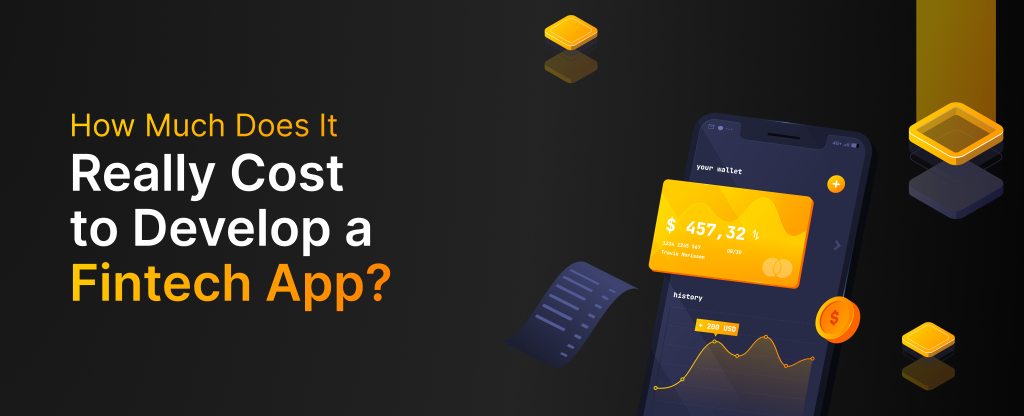
Venturing into the fintech market is a strategic decision, whether you are a visionary entrepreneur or an existing corporation looking to expand your service offerings. Understanding the financial consequences of establishing a fintech application is a vital step in this path.
In today’s digital world, where mobile banking and electronic transactions are becoming more widespread, understanding the expenses connected with fintech app development is critical. The fintech industry is thriving, presenting enormous opportunities as well as unique problems. Fintech applications range from mobile banking and digital wallets to investing platforms and insurance solutions. Each category provides distinct development challenges and cost considerations. Let learn more on these challenges and development cost
What is Fintech App Development?
Let’s quickly review the actual requirements of developing a fintech app before getting too caught up in the numbers. Fintech applications are customized programs made to enhance and mechanize the provision of financial services. They cover a wide range of topics, including investments, banking, insurance, and more. Creating these applications requires a blend of software development expertise, regulatory awareness, and knowledge of finance. Typically, the first step in developing a fintech app is to discover a niche or a particular issue that needs to be resolved. Subsequently, comprehensive market analysis, specification of technical specifications, UI design, and coding, testing, and deployment take place.
The complexity of fintech app development lies in its need to integrate various technologies like blockchain, artificial intelligence, and big data analytics. Additionally, fintech apps must comply with stringent regulations and standards to ensure data security and privacy.
Why Fintech Apps Are in High Demand?
Consumers are searching for efficiency and convenience in the current digital era. Fintech applications facilitate users’ financial management, investing, and payment transactions directly from their mobile devices. The rise in fintech app development is largely due to this change in customer behavior. The increasing use of smartphones, the necessity for real-time access to financial services, and the acceptance of cashless transactions are driving demand for fintech apps.
Moreover, traditional banking and financial institutions are facing stiff competition from nimble fintech startups that offer innovative solutions. This competition is driving both incumbents and newcomers to invest heavily in fintech app development to stay relevant. For consumers, the allure of fintech apps lies in their ability to provide seamless, user-friendly experiences and innovative features that make financial management easier and more accessible.
Factors Impacting the Cost of Fintech App Development
The following are some important variables that can have a big impact on how much developing a fintech app will cost you:
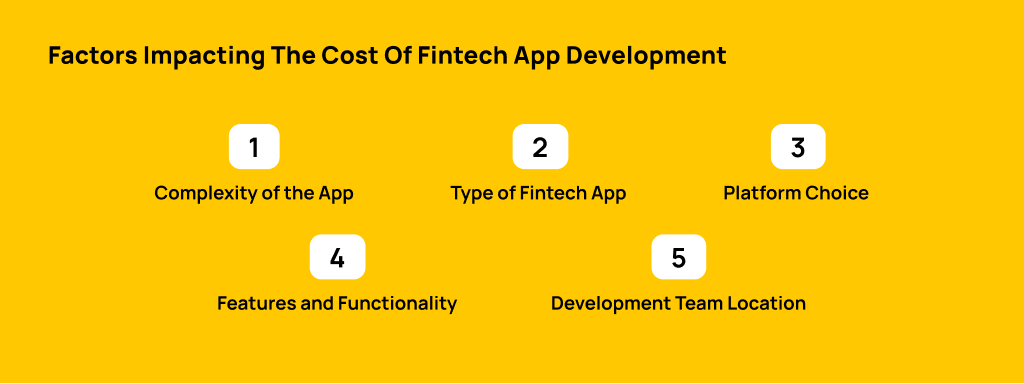
Complexity of the App
You will probably spend less if you want an integrated banking solution with comprehensive capabilities than if you want a simple budgeting tool. More features and screens translate into more time and, eventually, more money. Robust security measures, substantial backend development, and connection with third-party services are frequently necessary for complex programs. Furthermore, complicated financial apps could have to manage enormous data and transaction volumes, necessitating more advanced infrastructure and greater scalability.
Type of Fintech App
What kind of app are you making next? The following is a brief summary of popular fintech app categories and their associated prices:
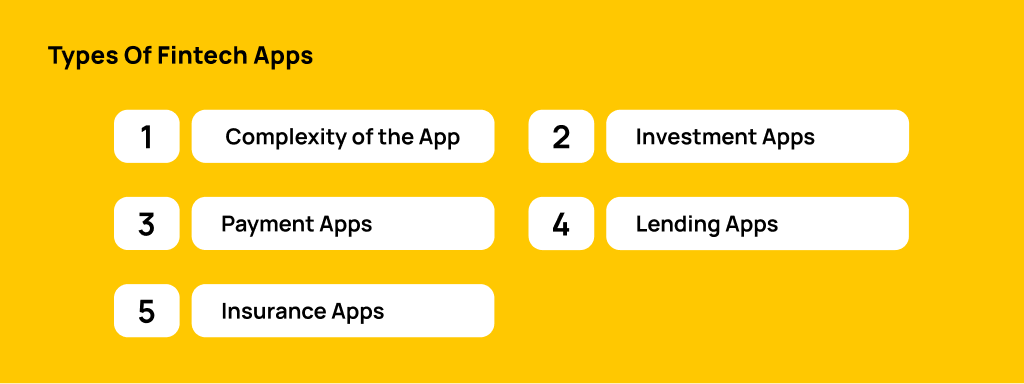
Banking Apps
Banking apps offer users the ability to manage their bank accounts, conduct transactions, and access financial services on the go. They often include features like account balance inquiries, fund transfers, bill payments, and loan applications. Due to the sensitive nature of financial data, banking apps must adhere to strict regulatory requirements and implement robust security measures. This includes encryption, secure authentication methods, and compliance with standards such as PCI DSS (Payment Card Industry Data Security Standard).
Investment Apps
Investment apps cater to users who want to manage their investments, track stock market trends, and receive financial advice. These apps typically provide real-time data on stocks, bonds, mutual funds, and other investment vehicles. Advanced features may include portfolio management tools, automated trading algorithms, and financial news updates. Integrating real-time data feeds and ensuring the app’s performance during high trading volumes can add to development costs.
Payment Apps
Payment apps enable users to make digital payments, transfer money, and manage their finances with ease. Popular examples include PayPal, Venmo, and Cash App. These apps need to support multiple payment methods, including credit/debit cards, bank transfers, and digital wallets. Security is paramount for payment apps, requiring measures such as tokenization, encryption, and fraud detection. Additionally, compliance with regulations like GDPR (General Data Protection Regulation) and PSD2 (Payment Services Directive 2) is essential.
Lending Apps
Lending apps facilitate the borrowing and lending of money, offering services such as personal loans, payday loans, and peer-to-peer lending. These apps often include features like loan application processing, credit scoring, interest rate calculations, and repayment tracking. Developing lending apps involves integrating with credit bureaus, implementing robust risk assessment algorithms, and ensuring compliance with lending regulations. Additionally, providing a seamless and user-friendly experience is crucial to attract and retain users.
Insurance Apps
Insurance apps allow users to manage their insurance policies, file claims, and receive customer support. They can cover various types of insurance, including health, auto, home, and life insurance. Key features may include policy management, premium payments, claims processing, and in-app customer service. Developing insurance apps requires integrating with insurance providers’ systems, implementing secure data storage, and ensuring compliance with industry regulations such as HIPAA (Health Insurance Portability and Accountability Act) for health insurance.
Platform Selection (iOS vs Android)
Do you create apps for iOS, Android, or both platforms? Developing for two or more platforms usually results in double the expense. The timescale may be extended by the distinct coding languages and design standards used by each platform. For example, Swift is usually used for iOS programming, whereas Java or Kotlin are used for Android development. It takes more time and resources to make sure the app offers a consistent user experience across all platforms.
Additionally, cross-platform development frameworks like React Native or Flutter can be used to reduce costs by enabling the development of a single codebase that runs on both platforms. However, this approach may not be suitable for all fintech apps, particularly those requiring complex native functionalities.
Development Team Location
You should budget for a higher price if you hire a local team in the USA or Europe. On the other hand, you can cut costs considerably by outsourcing to nations with lower cost of living, but project management and communication suffer as a result. Although they frequently offer inexpensive rates, offshore development teams in places like Southeast Asia, Eastern Europe, or India may provide difficulties due to cultural differences, time zone variances, and language obstacles.
It’s crucial to thoroughly screen offshore development partners to make sure they possess the knowledge and experience needed to create fintech apps. Setting up effective project management procedures and lines of communication can also aid in reducing any problems.
Features and Functionality
What features are crucial to your app?
Rich functionalities like real-time notifications, social sharing options, or even advanced AI components will undeniably ramp up your costs. Common features for fintech apps include:
- User Authentication: Secure login methods such as biometrics, two-factor authentication, and OAuth.
- Transaction Processing: Real-time processing of payments, transfers, and other financial transactions.
- Data Analytics: Providing users with insights and analytics based on their financial activities.
- Customer Support: In-app chat, call support, and AI-driven chatbots for user assistance.
- Integration with External Services: Connecting with banking APIs, payment gateways, and other third-party services.
Each additional feature requires more development time and resources, impacting the overall cost of the app.
Breakdown of Development Costs
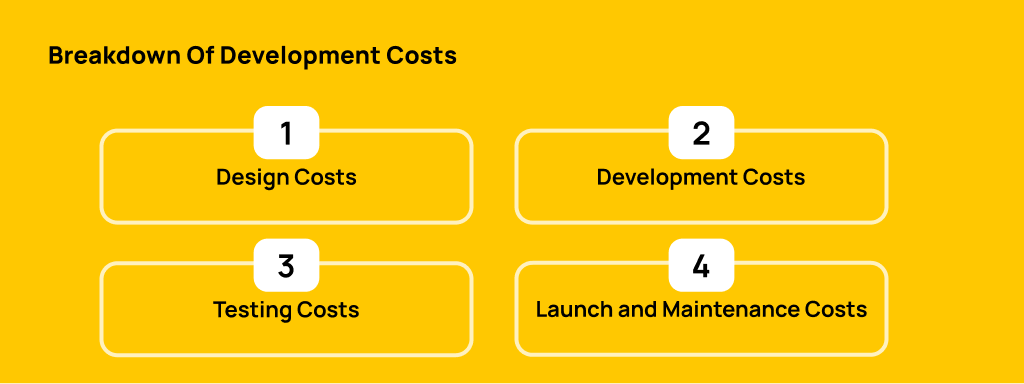
Design Costs:
Typical design phases include user interface design, prototyping, and wireframing. One might spend anywhere from $5,000 to $15,000, depending on complexity. Consider building an outstanding business window: if it is enticing, consumers will come! To improve the user experience, an intuitive and visually appealing user interface must be designed. This includes creating interactive elements, navigation flows, buttons, and icons. This phase also includes high-fidelity prototypes and user testing to ensure that the app meets user expectations and usability guidelines.
Development Costs
For actual coding and development, expect to allocate $20,000 to $150,000 or more, depending on the app’s features. Development expenditures include the actual coding and development of the front and back ends, as well as the integration of third-party services and APIs. Financial apps require robust security features such as data protection, safe authentication, and encryption. The development phase also includes establishing the server infrastructure, databases, and cloud services.
Testing Costs
Proper testing is essential—think $5,000 to $20,000 for this phase to ensure all bugs are ironed out before launch. Testing is critical to ensuring that all defects are resolved before the launch. This stage consists of various testing phases: unit testing, integration testing, system testing, and user acceptability testing (UAT). Performance and stress testing are required to ensure that the app can handle high user loads and detect potential sites of failure. Security testing is also essential for detecting vulnerabilities and ensuring compliance with security policies. End customers benefit from a stable, secure, and high-quality app that has been thoroughly tested.
Launch and Maintenance Costs
Following launch, continuing expenditures for updates and maintenance must be considered. The costs of launching an app include app store registration fees, first marketing initiatives, and server setup. One should allocate around 15-20% of their initial development budget annually. Regular updates are required to address errors, introduce new features, and boost performance. Maintenance costs include server hosting, monitoring, customer support, and ensuring the software is compatible with the most recent operating systems and devices. Regular maintenance helps to keep users satisfied and the app competitive in the market.
Additional Costs to Consider
Regulatory Compliance
Regulatory compliance can be complicated, requiring adherence to industry standards and legislative restrictions specific to the financial sector. Getting it correctly costs between $10,000 and $100,000, depending on the complexity of your software and the jurisdictions involved. This involves getting the relevant licenses, establishing data security procedures, and adhering to standards such as GDPR, PCI DSS, and PSD2. Compliance costs include regular audits, legal counsel, and changes to keep up with changing rules. Ensuring compliance increases user trust while avoiding potential legal difficulties.
Security Features
Due to the frequency of data breaches, investing in strong security measures is unavoidable. Data encryption, safe authentication mechanisms (such as biometrics and two-factor authentication), fraud detection algorithms, and secure communication protocols are all examples of fintech app security features. Budget for around $10,000 to $50,000 for strong encryption and storage solutions. Implementing these protections necessitates specialized knowledge and extensive testing to verify the app’s security. Regular security audits and updates are required to handle evolving threats and vulnerabilities while safeguarding user data and financial activities.
Marketing and User Acquisition
A marketing strategy is essential when launching a fintech app. Marketing initiatives include developing a strong brand identity, providing promotional materials, and launching targeted advertising campaigns. Expect to invest between $5,000 to $50,000 on this. Social media marketing, content marketing, influencer relationships, and app store optimization (ASO) are all effective strategies for attracting customers. User acquisition expenditures also include referral campaigns, early adopter incentives, and collaborations with industry influencers to increase app visibility and downloads.
Ongoing Support and Upgrades
As technology advances, so should your app. Continuous support and upgrades are required to maintain and improve the app after launch. Continuous support and upgrades may add an additional $5,000 to $30,000 per year after launch. Ongoing support includes offering technical assistance to users, correcting issues, and responding to feedback. Regular upgrades entail introducing new features, increasing performance, and assuring compatibility with new devices and operating system versions. Monitoring user behavior and receiving feedback helps discover areas for improvement, hence improving the overall user experience. Investing in regular support and improvements helps to retain customers and keep the app relevant in a competitive market.
How to Reduce Fintech App Development Costs
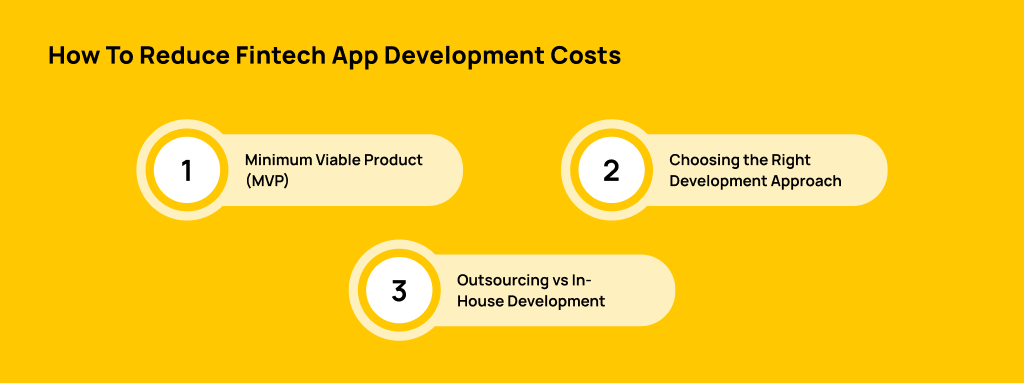
Minimum Viable Product (MVP).
Begin with an MVP, which is a simplified version of your program that focuses on the most important functionality. It allows you to test the waters before committing heavily to complete development. It’s like trying a dish before serving it at dinner. Creating an MVP entails defining the basic functionalities that will meet the major needs of your target audience. Launching a reduced version of the app allows you to get valuable customer input and confirm your concept. This iterative strategy enables you to make educated judgments and prioritize items based on customer demand, resulting in cost savings by eliminating superfluous development efforts.
Choosing The Right Development Approach
Which methodology would you choose: Agile development or waterfall? Agile’s iterative nature allows for ongoing revisions based on user feedback, potentially saving costs by catching issues early. The Agile methodology promotes collaboration, flexibility, and continuous improvement. It involves breaking the development process into smaller sprints, allowing for regular feedback and adjustments. This approach helps identify and resolve issues early, reducing the risk of costly changes later. In contrast, the Waterfall methodology follows a linear, sequential process, which may be suitable for projects with well-defined requirements. Choosing the right development approach depends on your project’s complexity, timeline, and flexibility requirements.
Outsourcing vs In-House Development
Consider the benefits and downsides of recruiting an in-house team versus outsourcing. While an in-house team may provide more control, outsourcing can dramatically reduce costs if you select the proper partner. In-house development ensures direct oversight, improved communication, and alignment with your company’s culture and goals. However, salaries, benefits, and infrastructure costs can all add up. Outsourcing to experienced development businesses or freelancers can result in cost savings, access to specialized talents, and greater flexibility. To achieve successful collaboration, outsourcing requires selecting reputable partners with an established track record, establishing clear communication routes, and defining expectations.
Wrapping Up
So, how much does it actually cost to design a fintech app? As we’ve seen, it can vary greatly based on a variety of criteria, including the sort of app being developed, its complexity, features, development location, and much more.
With proper preparation and a smart approach, you can maximize your budget and produce an app that not only thrives in the market but also fits the needs of customers without breaking the bank. Understanding the important cost-influencing aspects and studying cost-cutting strategies will help you make informed decisions and get the most out of your investment. Starting with an MVP, selecting the correct development approach, and carefully managing your resources, you can design a financial software that gives value to users and stands out.
- Agentic AI1
- Android Development3
- Artificial Intelligence34
- Classified App3
- Custom App Development5
- Digital Transformation12
- Doctor Appointment Booking App14
- Dropshipping1
- Ecommerce Apps40
- Education Apps2
- Fintech-Apps37
- Fitness App4
- Flutter4
- Flutter Apps20
- Food Delivery App5
- Grocery App Development1
- Grocery Apps3
- Health Care10
- IoT2
- Loyalty Programs9
- Matrimony Apps1
- Microsoft1
- Mobile App Maintenance2
- Mobile Apps129
- Product Engineering6
- Progressive Web Apps1
- React Native Apps2
- Saas Application2
- Shopify9
- Software Development3
- Taxi Booking Apps7
- Truck Booking App5
- UI UX Design8
- Uncategorized6
- Web App Development1










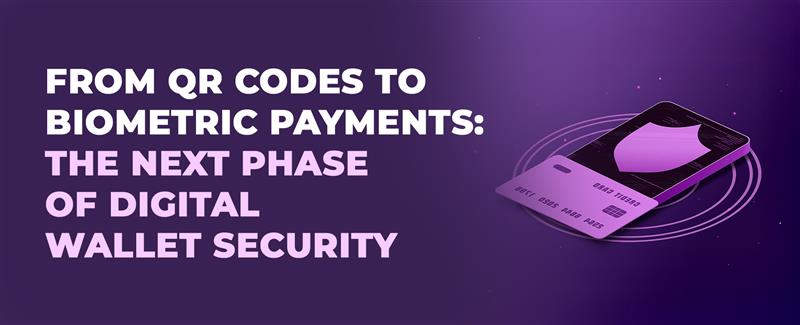
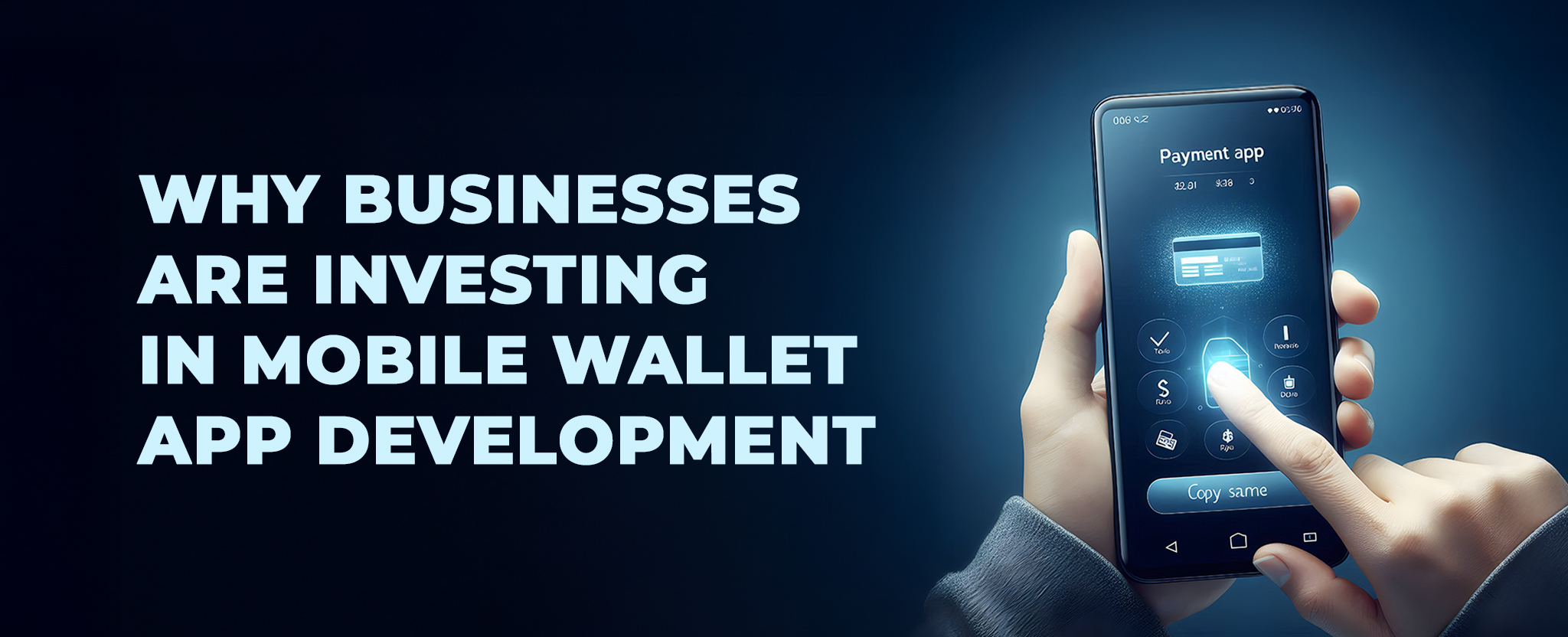
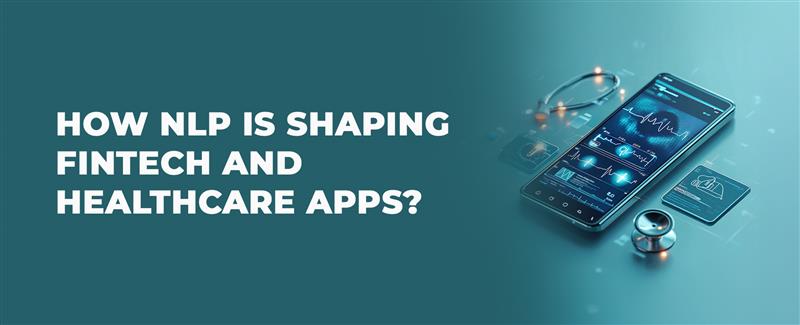






Comments